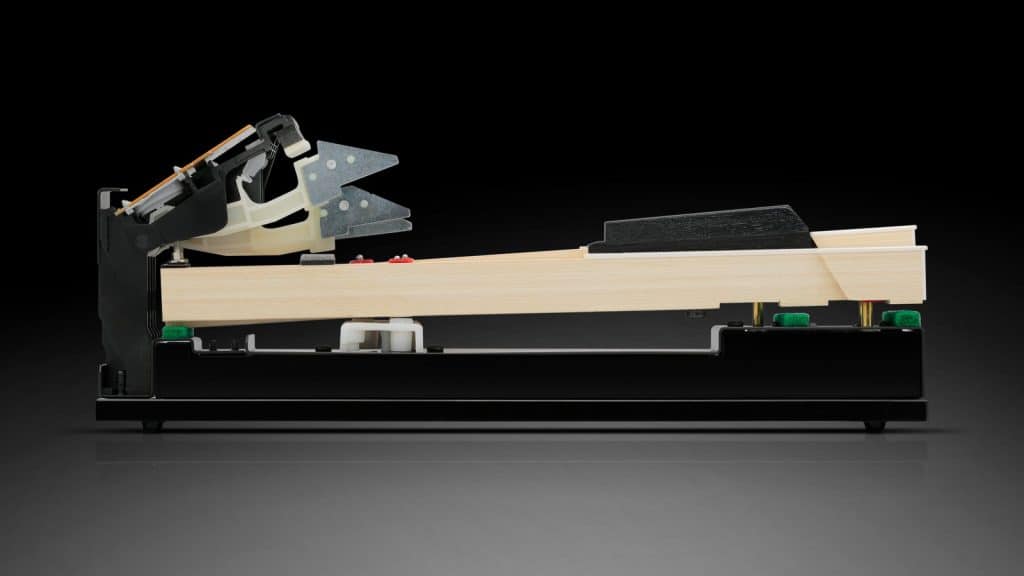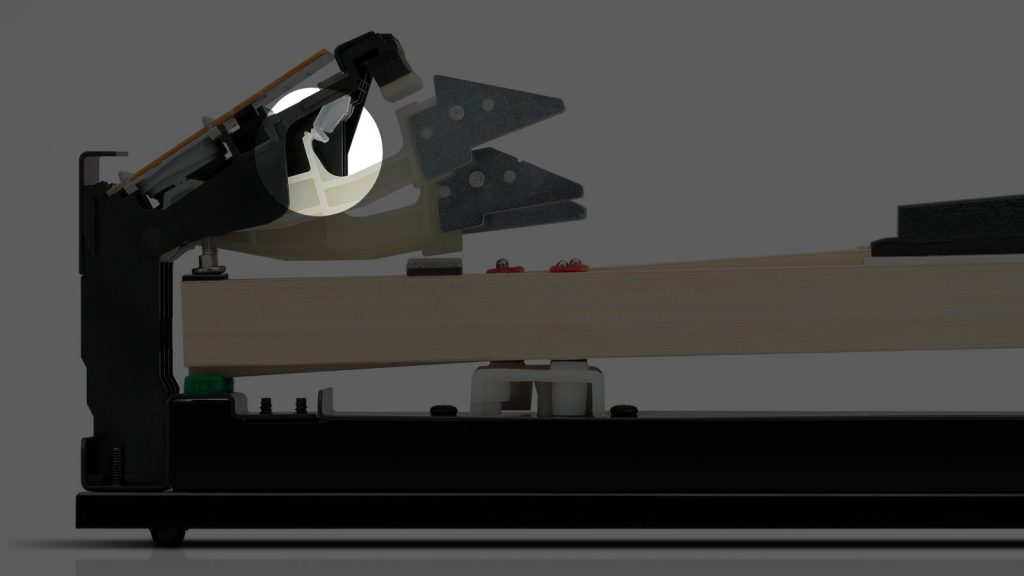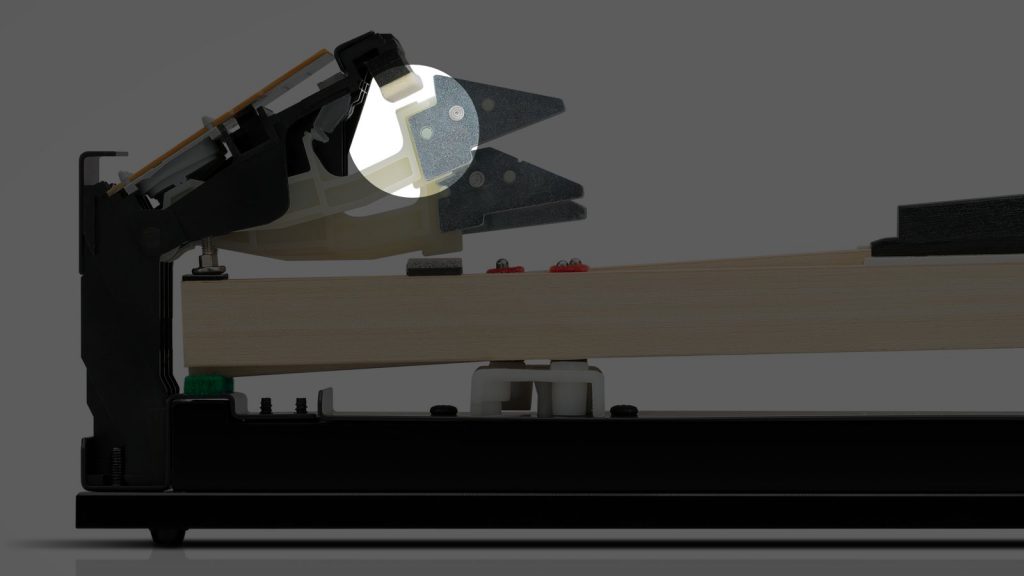A special feature of many mid-range and high-end digital pianos is the let-off simulation, which gives advanced pianists very precise control over their play.

A special feature of many mid-range and high-end digital pianos is the let-off simulation, which gives advanced pianists very precise control over their play.
Piano beginners will probably not even notice whether a digital piano keyboard is built with or without a let-off simulation. In fact, the mechanism – while intercepting the key travel – is not an “obstacle” that requires a great deal of effort to overcome. However, the escapement and its position allow the pianist to play finely controlled nuances, especially during quiet passages.

The word “simulation” already indicates that it replicates a detail of the action of an acoustic piano. This detail comes from the modern double-escapement repetition action, which evolved from the first double-escapement action invented by Sébastian Érard in the mid-19th century.
The double-escapement action is a complex decoupling of key and hammer. Simply put, it ensures that the hammer is ready to play immediately after a note is struck, even before the key has fully returned to its resting position. There are two ways to trigger the note:
This is also known as a repetition action.

The let-off point is particularly noticeable when playing pianissimo and wanting to apply as little force to the hammer movement as possible. It hence allows you to strike the keys in a controlled manner. Even a short keystroke is enough to send the hammer quickly but less forcefully to the virtual string.
Product descriptions and manuals sometimes use the term escapement (action/mechanism) instead of let-off simulation or mechanism.
On a digital piano, the let-off point is created by an inconspicuous mechanical device. Here, too, you must overcome a small resistance located further down the key travel. A tripple sensor system (3 sensors), which scans the key travel, is important for transmitting the velocity values for Note On- and Note Off-action:
Action 1: The key moves completely from sensor 1 to sensor 2 – the sound is triggered, and the velocity measurement determines how forcefully the key is struck.
Action 2: The key is not released completely but stops somewhere in the key travel. Now the note is struck again (repeated), and sensor 3 transmits the data for the new velocity measurement.
Everyone knows the bell-like, cool FM piano sound, often enhanced with effects and found in nearly every digital piano. This sound was modeled after the legendary Fender Rhodes but has a much brighter, more artificial ...
You don't have to be a professional pianist to play the piano chords for the song Someone Like You. And yet it is one of Adele's most successful songs. In that sense, Someone Like You ...
In our "PIANOO Giveaway", Modartt is offering three full user licenses for Pianoteq. This physically modeled software instrument runs on MacOS, iOS, Windows, and Linux. You have the chance to win a license for one ...
70 years of Thomann - 70 years of passion for music. Under the title Behind the Passion, the music store tells the story of Thomann and offers a closer and more personal look behind the ...
Kawai's ES Series portable pianos are popular with both beginners and advanced players, offering high-quality features in the $400–$1,200 price range. Key improvements over previous ES models include a significantly lighter weight, bass reflex speakers, ...
Why does the world need a Piano Day? "There are many reasons," says Nils Frahm, "but above all, it can't hurt to celebrate the piano and everything related to it: Artists, composers as well as ...
Since not every piano VST is available as a standalone version, you need host software. If you don't want to buy an expensive digital audio workstation, you can use a free DAW instead. And you ...
Save the Date! Superbooth 2025 will take place from May 8-10. This year, too, you can look forward to the performance and workshop program, which invites you to the usual location at the Freizeit- und ...
If you want to record authentic piano tracks in a DAW, you need a good MIDI keyboard. Of course, you can also connect a digital piano or stage piano to your PC instead. Depending on ...
The term "felt piano" is closely associated with the popularity of the neoclassical genre, where this very soft sound has almost become a trademark. The sound and its poetic quality are actually a by-product of ...
Playing piano with the sustain pedal - it's the easiest thing in the world! Full-throttle on the right pedal and hammer on the keys - it's great fun and sounds excellent. However, getting from one ...
You'll find the term triple sensor, 3-sensor, or tri-sensor technology in the specifications of many digital pianos. But is a triple-sensor digital piano really better, or can you safely ignore this feature? A brief look ...
You are currently viewing a placeholder content from Facebook. To access the actual content, click the button below. Please note that doing so will share data with third-party providers.
More InformationYou are currently viewing a placeholder content from Instagram. To access the actual content, click the button below. Please note that doing so will share data with third-party providers.
More InformationYou are currently viewing a placeholder content from X. To access the actual content, click the button below. Please note that doing so will share data with third-party providers.
More Information